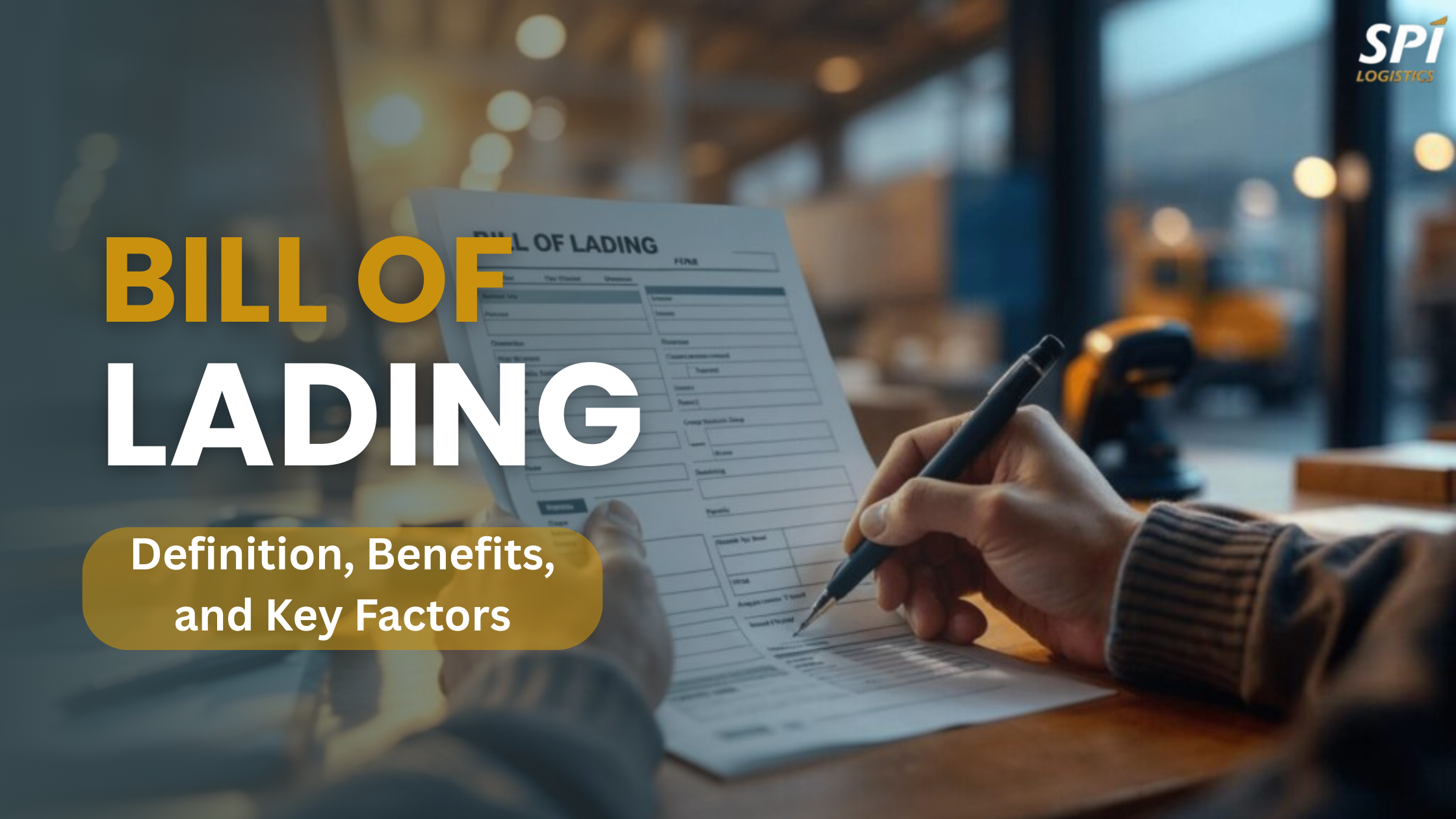In global trade, documentation is the backbone of smooth operations. Among these, the bill of lading remains one of the most essential. From trucking to maritime freight, every shipment needs proper documentation to ensure transparency, accountability, and compliance (FIATA, n.d.). But many still ask: what a bill of lading number is, how is it used in BOL logistics, and why does it matter in the BOL supply chain. In this blog, we’ll break down what a bill of lading is, what must be included, its benefits, types, and factors that influence its role in trade.
What Is Bill of Lading?
A bill of lading (BOL) is one of the most critical documents in logistics. It acts as:
- A contract between shipper and carrier.
- A receipt for goods.
- A title document that may be required to claim the cargo (ICC, n.d.).
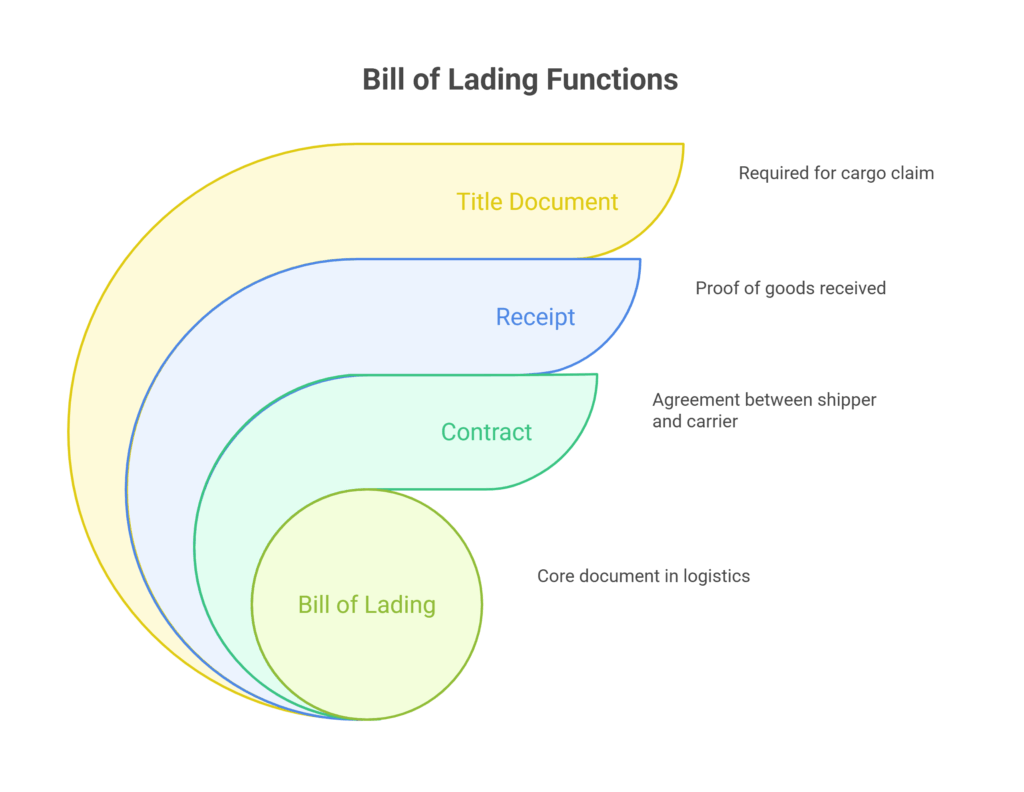
Unlike invoices or packing lists, the bill of lading carries legal weight. That’s why questions like what is a bill of lading number or what is BOL in trucking are so common, it’s the reference point for tracking and accountability.
“Think of the bill of lading as the passport for your cargo. Without it, goods cannot legally move or be claimed.”
Have you ever faced a shipment delay because of a missing or incorrect bill of lading paperwork?
What is a Bill of Lading Number?
A bill of lading number is a unique identifier assigned to each bill of lading. This number is essential for tracking shipments, verifying authenticity, and ensuring legal and financial compliance (Freightquote, n.d.). Every shipment is assigned a distinct BOL number, making it easier to reference in communications, customs procedures, or insurance claims.
Key things to know about the number:
- It appears at the top section of most documents.
- It works much like a tracking code, but within legal frameworks.
- It’s critical for resolving disputes, customs clearance, and freight claims (U.S. Customs and Border Protection, n.d.)..
Examples:
- BOL #12345 issued by FedEx for a shipment of medical equipment from Addis Ababa to Nairobi.
- Tracking a shipment of textiles via a BOL number helps the shipper confirm delivery dates and monitor transit conditions.
“Without a BOL number, even if you have the document, tracking and resolving shipment issues becomes extremely difficult. It is the anchor for all logistics operations.”
How often do errors in BOL numbers affect shipment tracking in your operations?
what is BOL in trucking?
In the trucking context, the ship bill acts as proof of delivery, ensuring drivers and brokers have aligned expectations.
For maritime or multimodal, BOL shipping is equally vital. It represents the carrier’s receipt and proof of transfer of responsibility for goods across international waters.
So whether you’re handling a ship bill for trucking or a complex bill of lading for global freight, both rely on the same foundation: an enforceable, traceable document.
“In trucking, a single misplaced BOL can delay payments by weeks. Standardizing the process of using a ship bill ensures faster settlements.”
If you’re in trucking, do you prefer paper BOLs handed to drivers, or digital copies uploaded instantly?
What Information Must Be Included in a Bill of Lading?
To be valid, a bill of lading must include essential details that prevent disputes and ensure accountability.
1. Shipper and Consignee Details – Full legal names, addresses, and contact numbers of both the sender and the receiver.
Example: ABC Textiles Ltd., New York shipping to Global Imports Pvt. Ltd., Mumbai.
2. Carrier Information – The transport provider responsible for moving the goods.
Example: Maersk Line or a regional trucking carrier.
3. Bill of Lading Number – A unique ID that acts like a tracking number.
Example: What is a bill of lading number? It’s what logistics teams use to trace shipments in real time.
4. Cargo Description – Detailed description of goods, including weight, dimensions, quantity, and packaging.
Example: 500 cartons of cotton shirts, 25kg each.
5. Origin and Destination – Clearly defined pickup and delivery points.
Example: Port of Shanghai to Port of Los Angeles.
6. Terms and Conditions – Liability limits, handling instructions, Incoterms (FOB, CIF), and expected delivery timelines.
“Accuracy in a bill of lading isn’t optional, misstated cargo descriptions or missing consignee details can delay shipments by weeks.”
Looking for smarter ways to manage the role of the Bill of Lading in logistics and supply chain? Explore SPI’s freight broker solutions to keep your operations efficient and compliant.
Benefits of a Bill of Lading
1. Proof of Contract – Formalizes the agreement between shipper and carrier, ensuring both sides are legally bound to terms (ICC, n.d.).
Example: A shipper can enforce delivery commitments if a carrier fails to meet deadlines.
2. Legal Protection – Serves as evidence in case of disputes, damage claims, or lost goods.
Example: Insurers often require a BOL to process claims for damaged or missing cargo.
3. Cargo Tracking – Using the bill of lading number, parties can monitor freight status in real time.
Example: Shippers can track containers via carrier portals or TMS systems to anticipate delays.
4. Financial Security – Banks and lenders use BOLs as collateral in trade finance and letters of credit (ICC, n.d.).
Example: Exporters can release goods knowing they will be paid once the BOL is verified.
5. Customs Clearance – Essential for border compliance and clearance processes (U.S. Customs and Border Protection, n.d.)..
Example: Ports require BOLs to release shipments, especially in international shipping where customs inspections are mandatory.
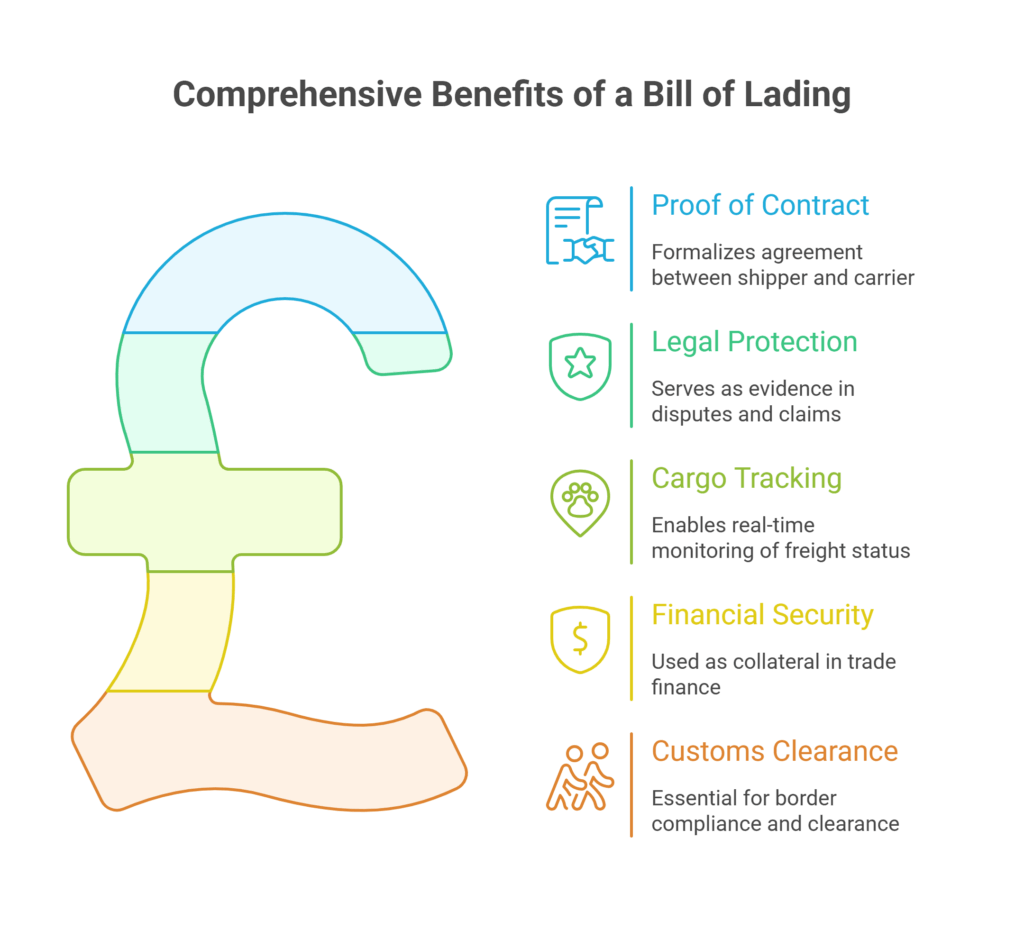
“In global shipping, no customs clearance officer will release goods without a valid bill of lading.”
How has a bill of lading helped you resolve a shipping dispute in the past?
Types of Bill of Lading
Different trades and transport modes require different forms of a BOL (Freightquote, n.d.).
1. Straight Bill of Lading – Non-negotiable; goods can only be delivered to the named consignee.
Example: A supplier shipping machinery directly to a factory.
2. Order Bill of Lading – Negotiable; allows transfer of ownership during transit.
Example: Bulk oil shipments sold multiple times while at sea.
3. Bearer Bill of Lading – Whoever holds the document can claim the goods. Rarely used due to high risk.
Example: Commodities trading where the document itself is a title.
4. Clean Bill of Lading – Indicates goods were loaded in good condition.
Example: Electronics shipped without packaging damage.
5. Claused Bill of Lading – Notes any visible discrepancies or damage.
Example: “10 cartons with water damage” noted at port.
6. Through Bill of Lading – Covers multiple transport modes (rail + sea + truck).
Example: Shipping containers from inland China to a U.S. warehouse via multimodal routes.
7. Electronic Bill of Lading (eBOL) – A digital, secure version widely adopted in modern BOL logistics.
Example: Reduces paperwork and allows real-time sharing with stakeholders.
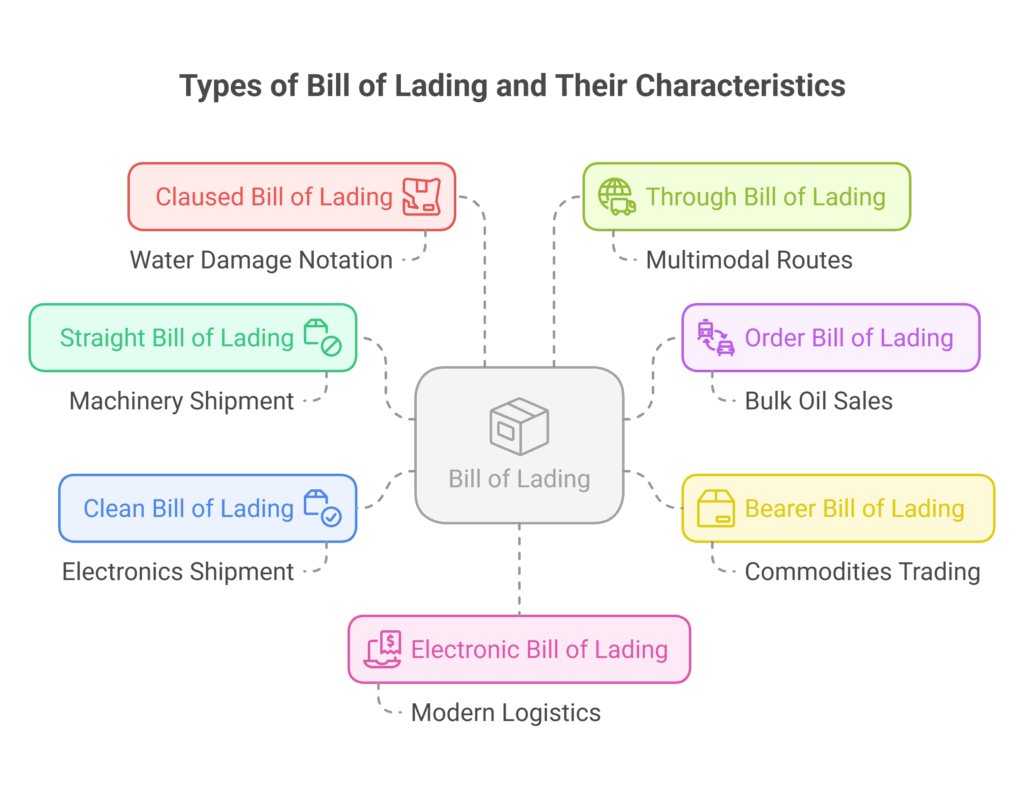
“Electronic bills of lading will soon dominate supply chains, cutting processing time by 60%.”
Which type of bill of lading do you encounter most in your industry?
Factors That Affect a Bill of Lading
Several elements influence how a bill of lading works and its accuracy.
1. Mode of Transport – Trucking, air freight, and ocean shipping each have different BOL formats and regulations.
Example: BOL in trucking differs from ocean BOLs in detail requirements and legal coverage.
2. Regulatory Requirements – Customs and trade laws differ by country (U.S. Customs and Border Protection, n.d.).
Example: The U.S. requires Import Security Filing (ISF) linked with BOL; failure can result in fines.
3. Cargo Type – Hazardous, refrigerated, or oversized cargo needs specific handling instructions (FIATA, n.d.).
Example: Perishable goods like seafood require temperature-controlled clauses.
4. Technology Integration – Digital tracking systems, BOL supply chain platforms, and ERP integration improve accuracy and efficiency.
Example: Digital BOLs allow automatic updates to all stakeholders.
5. Accuracy of Information – Typos or incorrect weight/volume can result in shipment delays, fines, or insurance issues.
Example: Misspelled consignee names can block customs clearance.
6. Incoterms Agreement – Determines risk, cost, and insurance responsibility between shipper and receiver (ICC, n.d.).
Example: FOB (Free On Board) means the buyer assumes risk once goods are on the vessel.
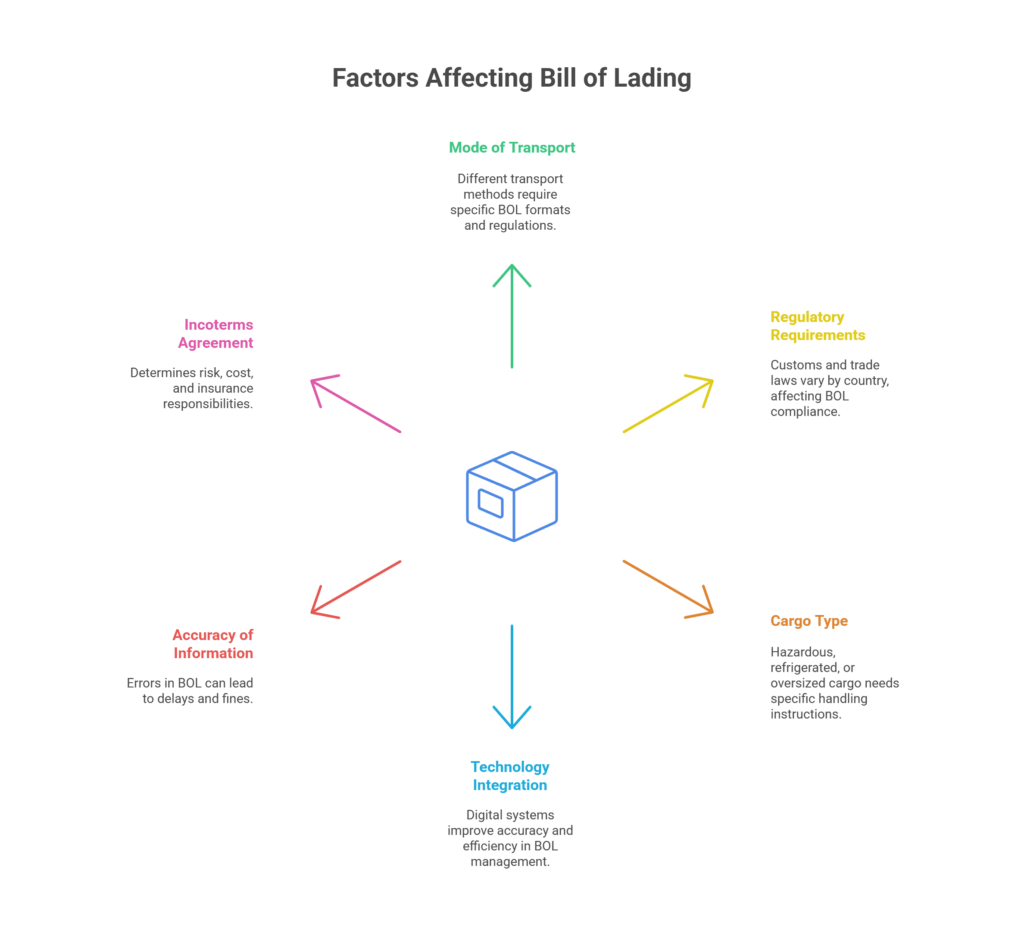
“Most delays and penalties in freight happen due to inaccurate or incomplete bill of lading details, not carrier inefficiency.”
Which factor do you think causes the most frequent BOL errors in your operations?
The Role of BOL in Logistics & Supply Chain
The power of the bill of lading goes beyond paperwork. Within BOL logistics, it ensures that all parties know exactly what’s being shipped, by whom, and where it’s headed. In the wider BOL supply chain, the document acts as both proof of ownership and a receipt of goods.
To fully grasp this, let’s look at a bill of lading example:
- Shipper: ABC Electronics
- Consignee: XYZ Retail
- Carrier: OceanLine Shipping
- Bill of Lading Number: OLX1234567
This bill of lading description not only confirms ownership but also secures the transaction under international trade laws.
Beyond legal proof, the bill of lading highlights its role as a bridge between physical cargo and digital supply chain systems.
“Digital integration of bill of lading numbers into TMS and ERP systems has transformed the BOL supply chain, reducing manual errors by 45%.”
Want to see how mastering the role of the Bill of Lading can streamline your logistics and supply chain operations? Discover how SPI’s Freight Brokerage Back Office Support can help
Frequently Asked Questions (FAQs)
1. What is a BOL number?
A BOL number is the unique identifier on a bill of lading used for tracking and verification of shipments. It is essential for monitoring cargo in transit, confirming deliveries, and ensuring compliance in trade and logistics.
2. Can you give me a bill of lading examples?
Example: BOL #XYZ12345 issued by DHL for 200 pallets of electronics from Shenzhen to Chicago. This example shows a real-world application for tracking, customs, and payment verification.
3. What does BOL stand for in shipping?
It stands for Bill of Lading, a crucial document that acts as a receipt, contract, and title for shipped goods.
4. How is a BOL number used in logistics?
It is referenced in communications between shippers, carriers, and receivers to track shipments, resolve discrepancies, and validate delivery for insurance and payment purposes.
Master Your Shipments
A bill of lading is a cornerstone of freight and logistics operations. From ensuring legal compliance to tracking shipments and safeguarding financial transactions, it impacts every stage of the supply chain. Understanding the details, from the BOL number to the various types and critical factors, empowers shippers, carriers, and receivers to operate efficiently, minimize risks, and resolve disputes quickly.
Ready to streamline your shipping processes with confidence? Contact us to get expert guidance on managing bills of lading effectively.
References
FIATA. (n.d.). FIATA documents and forms. Retrieved from https://www.fiata.org
Freightquote. (n.d.). Freight shipping basics. Retrieved from https://www.freightquote.com
ICC. (n.d.). International Chamber of Commerce: Bills of Lading. Retrieved from https://iccwbo.org
U.S. Customs and Border Protection. (n.d.). Importing and Exporting: Bill of Lading requirements. Retrieved from https://www.cbp.gov

